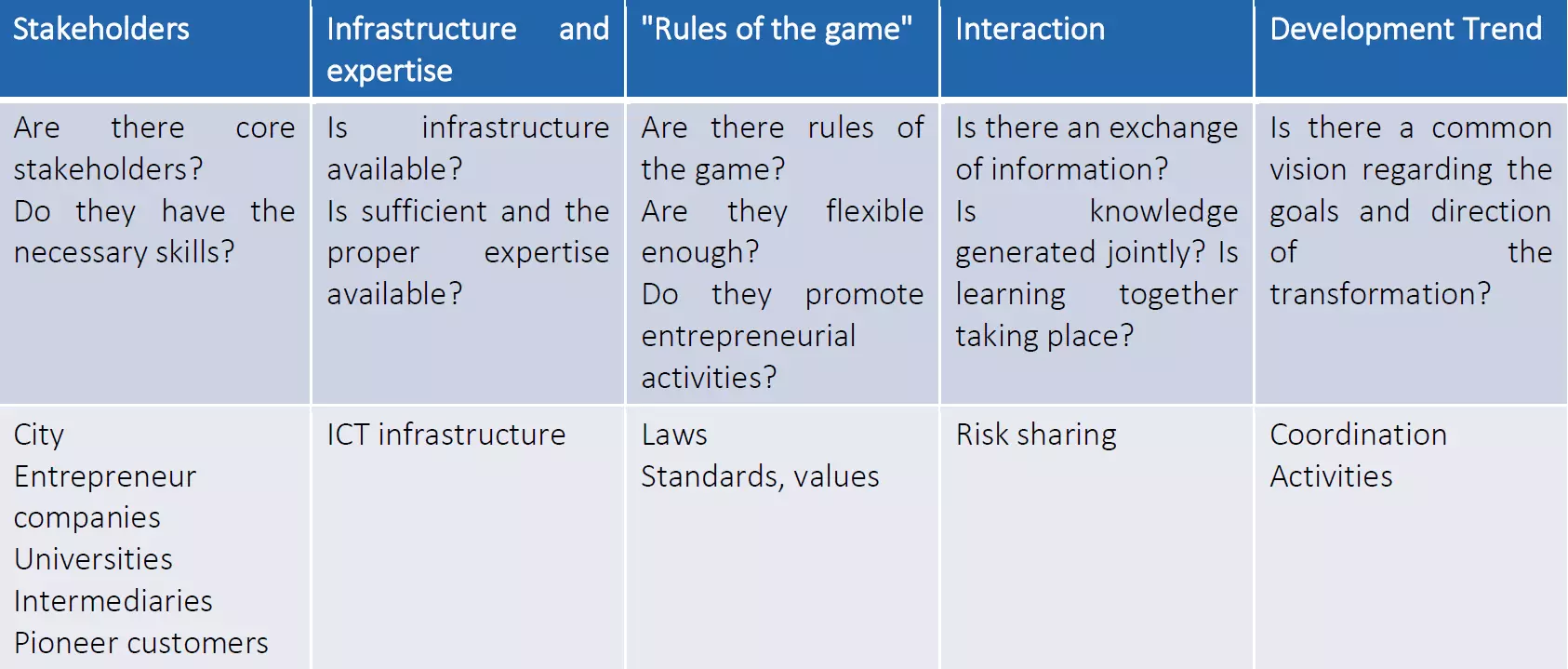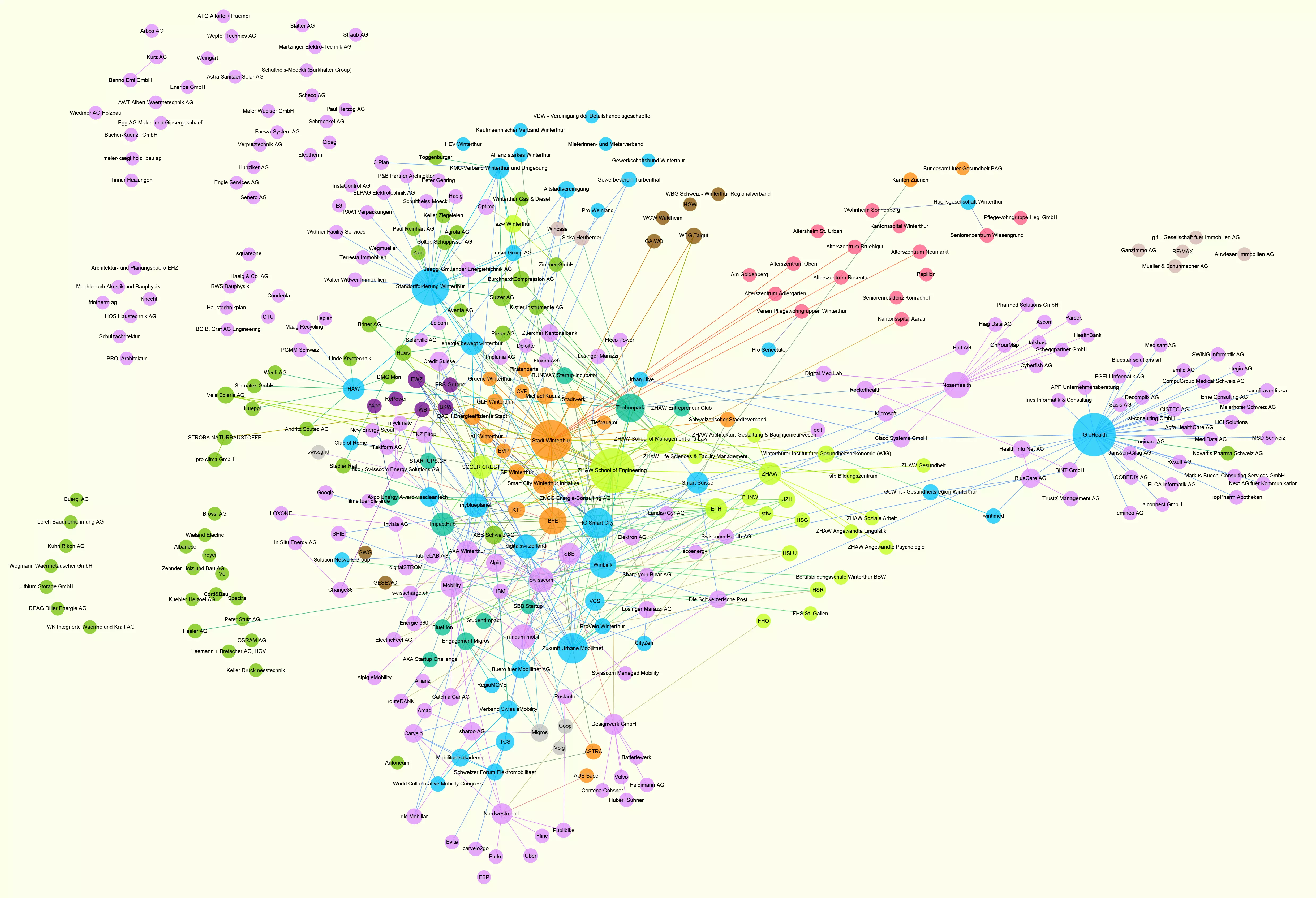Innovation System Analysis Tool
Innovation arises from the systemic interaction of actors, infrastructures and artefacts, certain challenges, problems or opportunities under specific institutional or legal conditions. This is particularly relevant for Smart City as here e.g. city administration, companies, universities, intermediaries, pilot customers enter into new cooperations and build networks to develop new solutions for specific challenges of a city. This is followed by the fact that specific SC projects and solutions have already been set up in the structure of the respective cities, but are partly not recognised or are not tackled or broken off due to certain barriers. The innovation system analysis therefore offers a further approach for a status quo analysis in order to work out city-specific SC projects and solutions or to identify barriers and drivers for the later implementation of an SCI. Pioneering cities such as Vienna or Amsterdam have also further developed their innovation systems in the implementation process of SC, e.g. by creating new organizations and companies, new digital infrastructures (e.g. sensors, databases, software) as well as new hard (laws, regulation) and soft (values, standards) institutional frameworks (laws and regulations, planning processes, roadmaps up to a real Smart City culture). The interaction of these elements in the innovation system simplifies and accelerates the implementation of new solutions and thus the transformation to new urban systems.
Implementation Innovation System Analysis
The status quo analysis within the framework of an innovation system analysis first of all includes the identification of actors (e.g. administrative bodies, companies, investors, universities and research centres, associations and consultancies) that are active in the defined Smart City topics (e.g. energy, mobility, health, housing). Subsequently, the relationships between the actors are analysed. These relationships result from joint projects or joint participation in networks (e.g. memberships in associations). The result is a database and a graphically prepared innovation map, which shows the actors and their relationships and networks, respectively. Finally, systemic challenges are identified, which may hinder the development of the Smart City Innovation System. These can be on the level of the actors, the infrastructure, the rules of the game, the interaction and the direction of development (see Figure 1).
Example Smart City Innovation System Winterthur
The map of the Smart City Innovation System Winterthur (see Figure 2) contains about 360 actors and 470 relationships. In addition to the administration (including the public utility company), companies, the Zurich University of Applied Sciences (ZHAW), the Technopark and individual intermediaries are also active in Smart City projects. Intermediaries network primarily within individual thematic areas such as energy, mobility and health. Cooperation on Smart City topics between the City of Winterthur, the ZHAW and the intermediary „energie bewegt winterthur“ has been formally established in the „Smart City Winterthur“ initiative since 2013. The City of Winterthur is thus in a good position overall. Potential exists in particular in the area of ICT infrastructure and in cooperation with major (ICT) players. In addition, networking between the individual thematic areas (e.g. energy and mobility, housing and e-health) can be expanded in order to exploit synergies. Participatory stakeholder processes can be used in the sense of co-creation.

